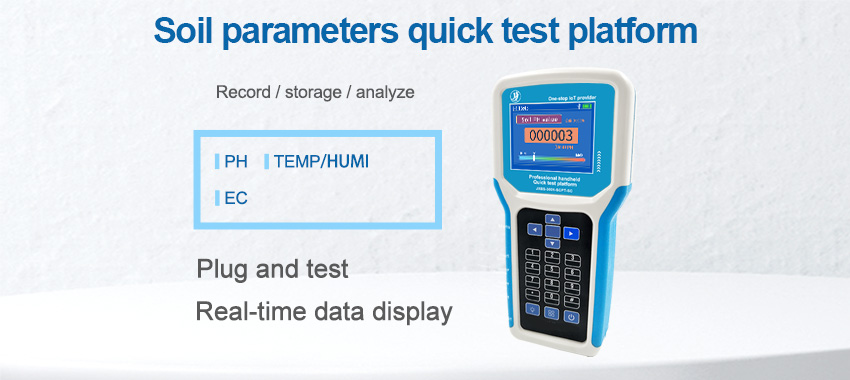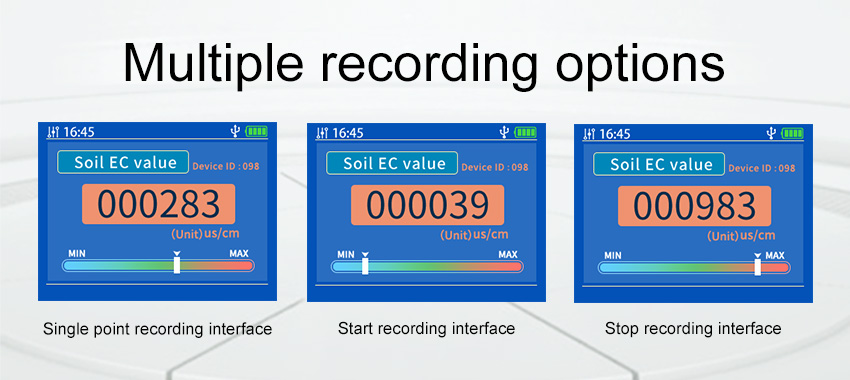Precision agriculture has emerged as a solution to meet the increasing demand for food in a sustainable and efficient manner. One of the key technologies driving this revolution is soil sensing. Soil sensors provide real-time data on various soil parameters, enabling farmers to make informed decisions about resource management and optimize crop production. This article explores how soil sensors are unleashing the power of precision agriculture and transforming the way we farm.
Understanding Soil Sensing Technology:
Soil sensing technology involves the deployment of sensors in the soil to measure critical variables such as moisture content, nutrient levels, pH, temperature, and compaction. These sensors can be strategically placed across fields, allowing farmers to monitor soil conditions continuously. The data collected by these sensors is transmitted wirelessly to a central system, where it is analyzed and interpreted.

Optimized Resource Management:
With soil sensors, farmers can precisely manage their resources based on real-time soil data. For instance, soil moisture sensors provide accurate information about the water content in the soil. This data enables farmers to implement precise irrigation strategies, delivering the right amount of water at the right time. By avoiding over-watering or under-watering, farmers can optimize water use efficiency, minimize water wastage, and reduce energy costs associated with irrigation systems.
Tailored Nutrient Application:
Nutrient management plays a crucial role in crop productivity and sustainability. Soil sensors provide farmers with insights into the nutrient status of the soil. By analyzing this data, farmers can tailor their fertilizer application to ensure that crops receive the required nutrients in the right quantities. This targeted approach minimizes the risk of nutrient runoff, reduces environmental pollution, and optimizes crop health and yield. Soil sensors also enable farmers to monitor nutrient levels over time, allowing for adjustments and fine-tuning of nutrient management practices.
Proactive Soil Health Management:
Maintaining healthy soil is vital for optimum crop growth and resilience. Soil sensors help in early detection of soil issues that can impact crop health, such as salinity, pH imbalances, and compaction. By identifying these issues early on, farmers can take proactive measures to address them before they negatively affect crop performance. For example, if a soil sensor indicates high salinity, farmers can implement appropriate strategies like leaching or adjusting irrigation practices to minimize the impact on crops. Early detection and intervention help preserve the long-term health and productivity of the soil.
Site-Specific Decision Making:
Soil sensing technology enables site-specific decision making by providing detailed spatial data on soil variability within a field. Farmers can create soil maps based on the information collected by sensors, highlighting variations in moisture content, nutrients, and other parameters. This data empowers farmers to implement variable rate application techniques, where inputs like fertilizers, seeds, and pesticides are applied at precise rates based on the specific soil conditions in each area of the field. Tailoring management practices to individual field zones optimizes resource allocation and maximizes crop productivity.
Integration of Data and Analytics:
Soil sensing technology generates vast amounts of data that can be integrated with other agricultural data sources for robust decision making. By combining soil data with weather forecasts, satellite imagery, and historical records, farmers gain valuable insights into how different factors interact and impact crop growth. Advanced analytics and machine learning algorithms can leverage this integrated data to generate predictive models, allowing farmers to anticipate soil nutrient needs, disease risks, and yield potential. These predictive capabilities enhance precision agriculture approaches and enable proactive management strategies.

Conclusion:
Soil sensing technology is empowering precision agriculture by providing real-time, accurate data on soil conditions. By leveraging this technology, farmers can optimize resource management, tailor nutrient applications, proactively manage soil health, and make site-specific decisions. The integration of data and analytics further enhances the power of soil sensors, enabling data-driven decision making for sustainable and efficient farming practices. As soil sensing technology continues to advance and become more accessible, it holds immense potential to revolutionize agriculture, promoting productivity, profitability, and environmental stewardship in the face of global food challenges.







